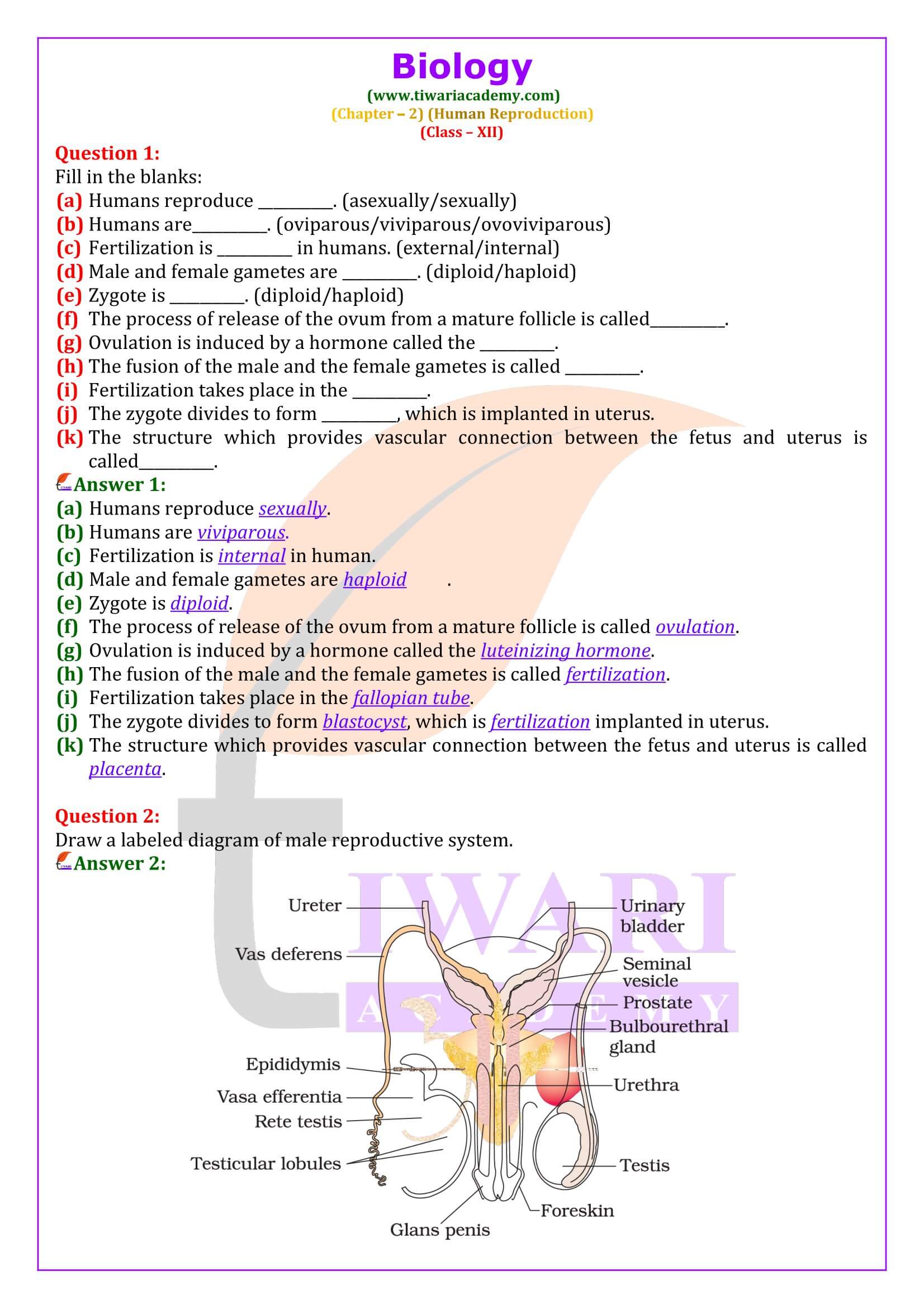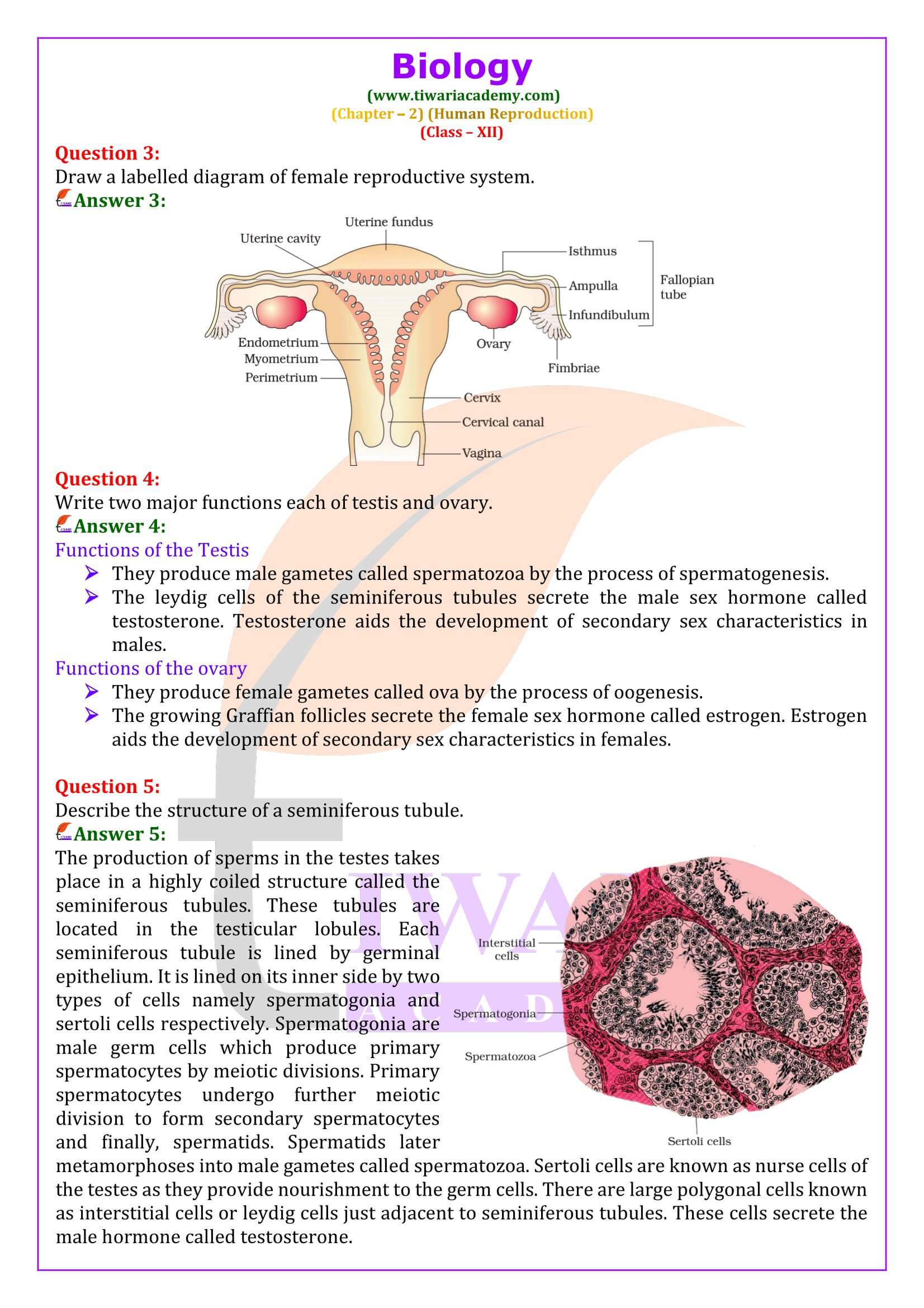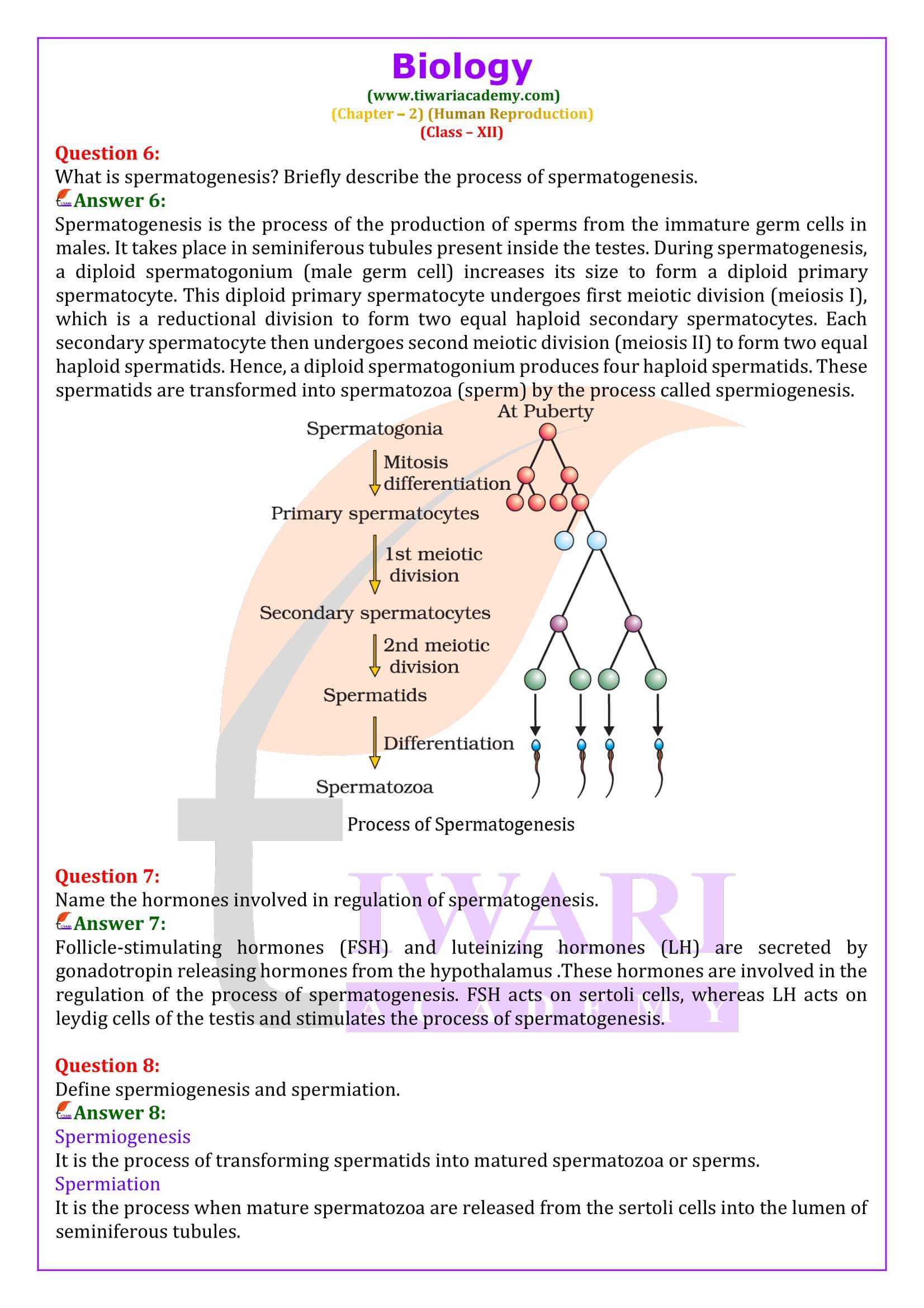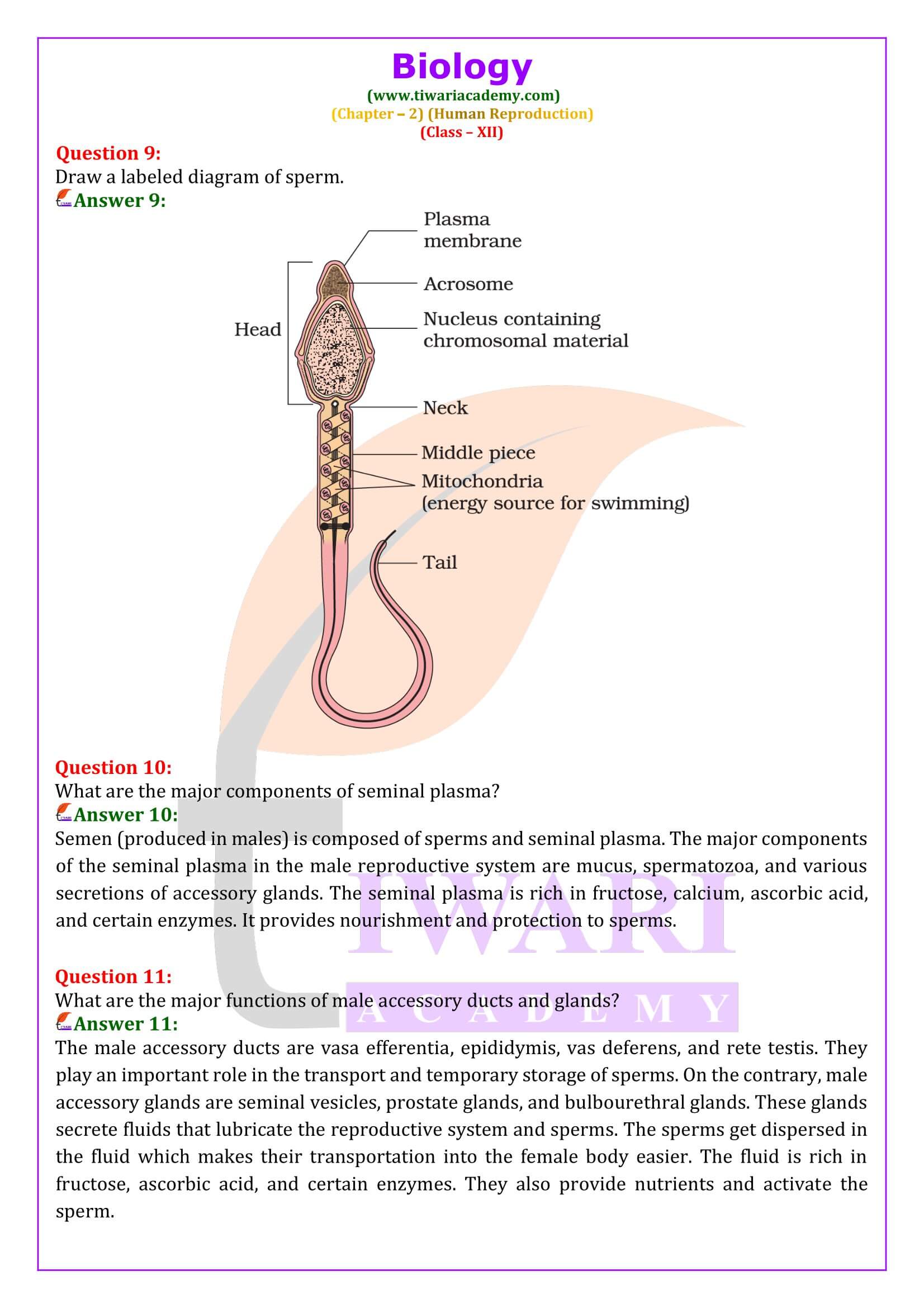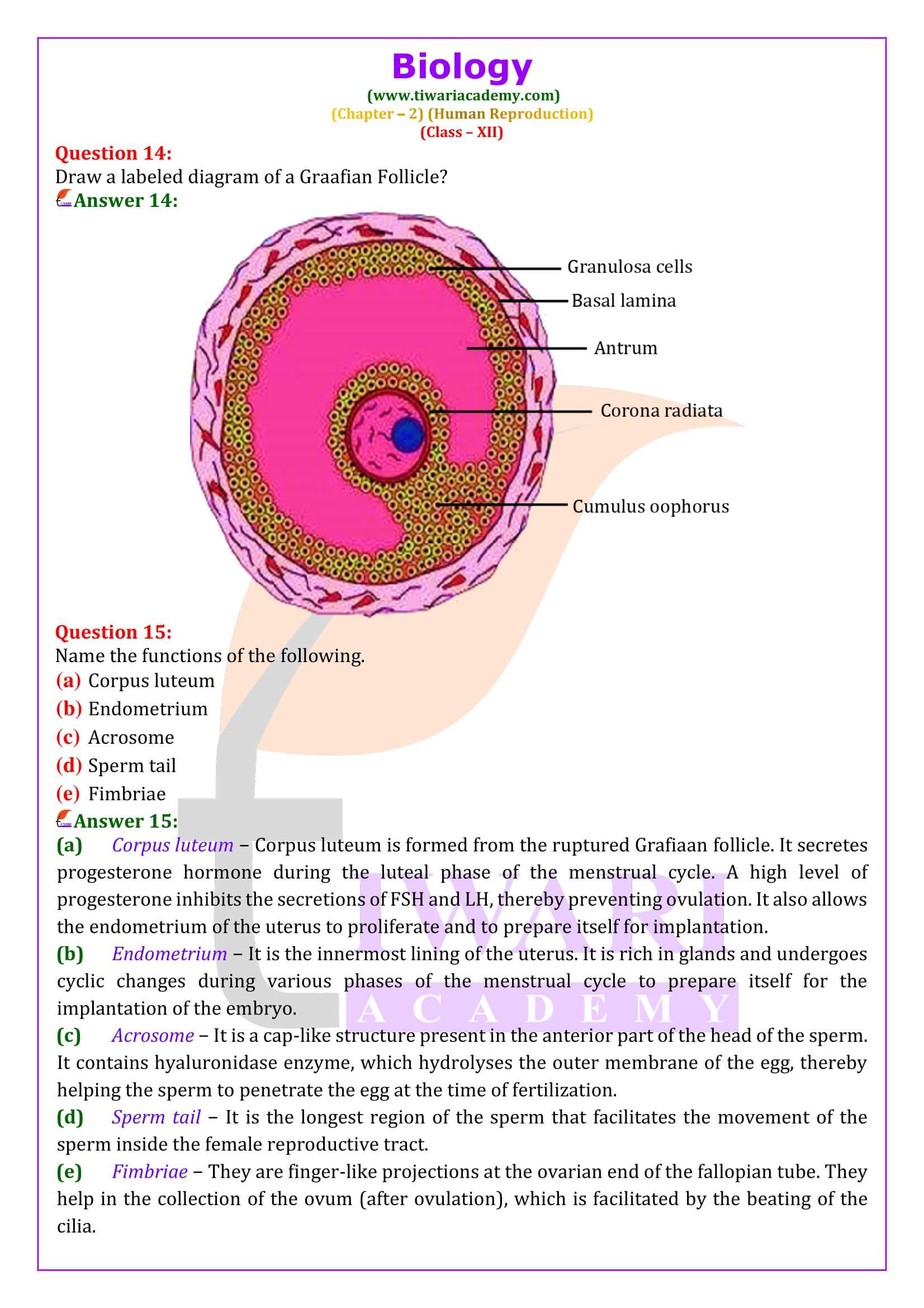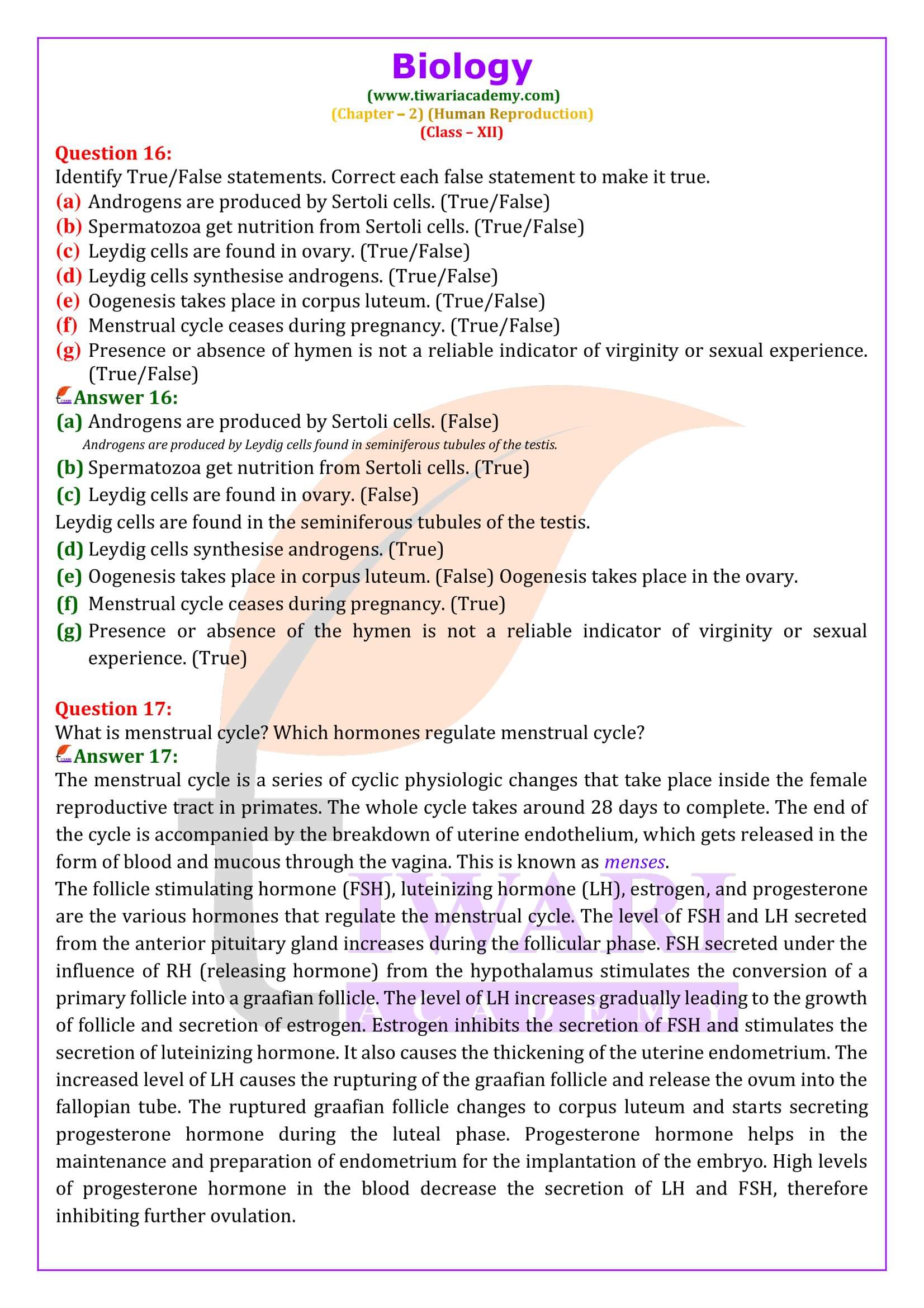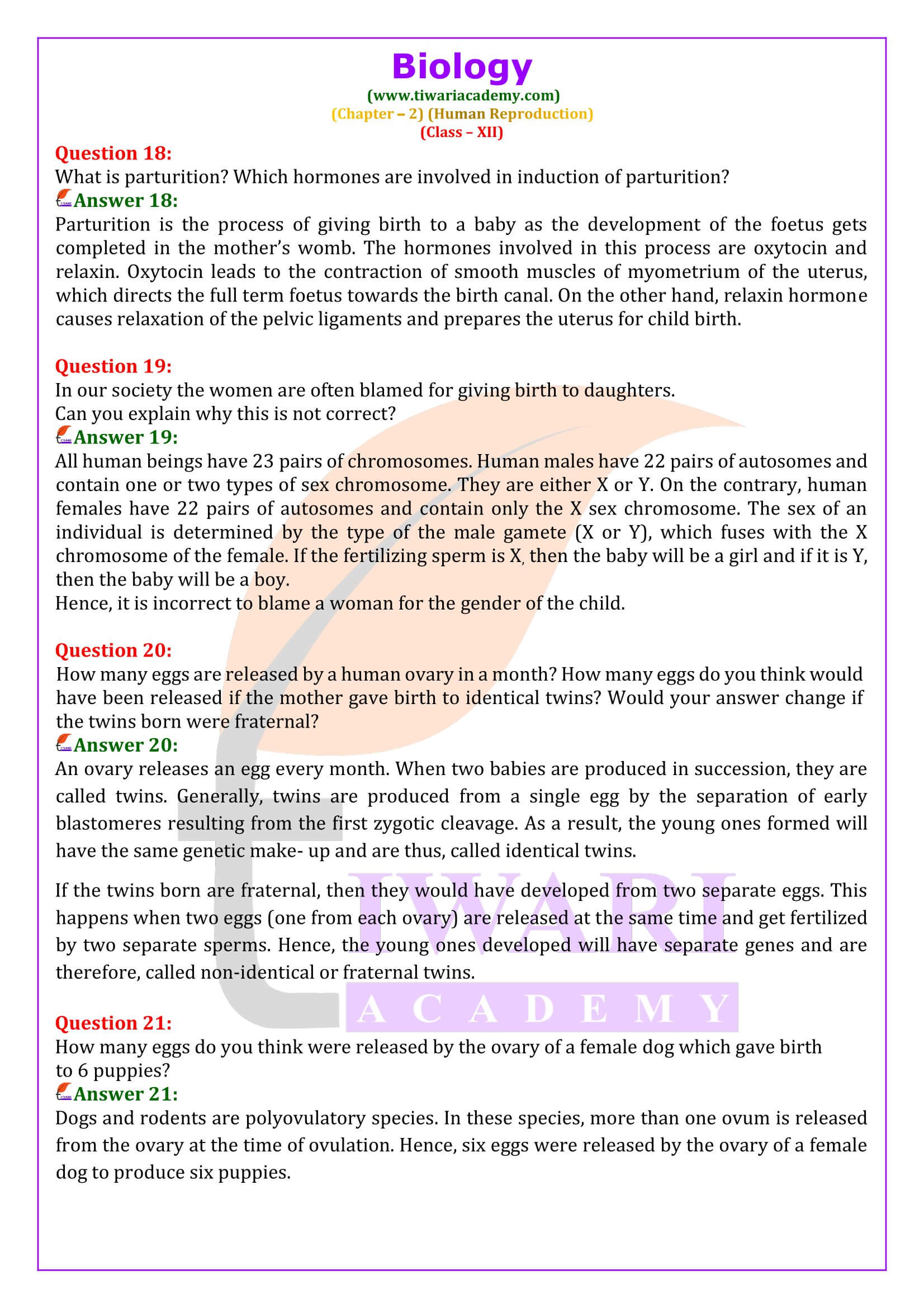NCERT Solutions for Class 12 Biology Chapter 2 Human Reproduction in Hindi and English Medium to Study Online or download in PDF format updated for new academic session 2024-25 for UP Board, MP Board, CBSE, etc, who are using NCERT Books 2024-25. NCERT Books and NCERT Solutions based on latest CBSE Curriculum 2024-25 is given to download.
NCERT Solutions for Class 12 Biology Chapter 2
| Class: 12 | Science |
| Subject: | Biology |
| Chapter 2: | Human Reproduction |
| Academic Session: | 2024-25 |
| Content: | Exercises solutions and Extra Questions |
| Medium: | Hindi and English Medium |
Class 12 Biology Chapter 2 Solutions in English
NCERT Solutions for Class 12 Biology Chapter 2 Human Reproduction in PDF format to free download is given here updated for new session 2024-25. Download NCERT Books for UP Board, CBSE, MP Board, Gujrat Board and all other boards who are following the latest CBSE Syllabus 2024-25.
Extra Questions Class 12 Biology Chapter 2
Failure of testes to descend into sacrotal sacs leads to sterility. Why?
High temperature of abdomen kills the spermatogenic tissue of the testes, so no sperm are formed.
How many sperms will be produced from 10 primary spermatocytes and how many eggs will be produced from 10 primary occytes?
40 sperms, 10 eggs.
What is meant by L.H. Surge? Write the role of L.H.
LH surge refers to maximum level of luteihising hormone living middle of menstrual cycle. LH couses ovulation.
T.S. of mammalian testis revealing seminiferous tubules show different types of cell. (i) Name the two types of cells of germinal epithelium. (ii) Name of cells scattered in connective tissue and lying between seminiferous tubules.
(i) Germinal epithelium have two types of cells.
1. Spermatogonium.
2. Sertoli cells
(ii) Leydig’s cell or Interstitial cells.
Important Terms related to Chapter 2
1. Gestation Period: A period between fertilisation of ovum and the birth of a baby.
2. Implantation: Fixing of ernbryo/fertilized egg in uterus. It leads to pregnancy.
3. Menarche: The beginning of first menstruation in female on attaining puberty.
4. Menopause: Permanent ceasation of menstrual cycle in female. It occurs between the age 45 to 50 years in human female.
5. Puberty: A stage at which immature reproductive system of boy or girl becomes mature. Period of puberty is 10-14 years in girls and 13-16 years in boys.
6. Ovulation: Process of release of mature ovum (Secondary oocyte) from the ovary.
Terms to Learn
1. Parturition: Process of delivery of the foetus (Child birth), through birth canal.
2. Spermiogenesis: Transformation of spermatids into sperms.
3. Spermiation: A process by which spermatozoa are released from the seminiferous tubules.
4. Spermatogenesis: Process of formation of sperm from male germ cell in the testes.
5. Lactation: The fluid secreted by mammary glands soon after birth is called colostrum. It contains proteins, lactose and antibodies (e.g. IgA).
This provides nutrition and help the new born baby to develop resistance for healthy development.
Important Questions on 12th Biology Chapter 2
Write two major functions each of testis and ovary.
Functions of the Testis They produce male gametes called spermatozoa by the process of spermatogenesis. The leydig cells of the seminiferous tubules secrete the male sex hormone called testosterone. Testosterone aids the development of secondary sex characteristics in males. Functions of the ovary They produce female gametes called ova by the process of oogenesis. The growing Graffian follicles secrete the female sex hormone called estrogen. Estrogen aids the development of secondary sex characteristics in females.
Name the hormones involved in regulation of spermatogenesis.
Follicle-stimulating hormones (FSH) and luteinizing hormones (LH) are secreted by gonadotropin releasing hormones from the hypothalamus .These hormones are involved in the regulation of the process of spermatogenesis. FSH acts on sertoli cells, whereas LH acts on leydig cells of the testis and stimulates the process of spermatogenesis.
Define spermiogenesis and spermiation.
Spermiogenesis It is the process of transforming spermatids into matured spermatozoa or sperms. Spermiation It is the process when mature spermatozoa are released from the sertoli cells into the lumen of seminiferous tubules.
What are the major components of seminal plasma?
Semen (produced in males) is composed of sperms and seminal plasma. The major components of the seminal plasma in the male reproductive system are mucus, spermatozoa, and various secretions of accessory glands. The seminal plasma is rich in fructose, calcium, ascorbic acid, and certain enzymes. It provides nourishment and protection to sperms.
What is parturition? Which hormones are involved in induction of parturition?
Parturition is the process of giving birth to a baby as the development of the foetus gets completed in the mother’s womb. The hormones involved in this process are oxytocin and relaxin. Oxytocin leads to the contraction of smooth muscles of myometrium of the uterus, which directs the full term foetus towards the birth canal. On the other hand, relaxin hormone causes relaxation of the pelvic ligaments and prepares the uterus for child birth.
How many eggs do you think were released by the ovary of a female dog which gave birth to 6 puppies?
Dogs and rodents are polyovulatory species. In these species, more than one ovum is released from the ovary at the time of ovulation. Hence, six eggs were released by the ovary of a female dog to produce six puppies.
